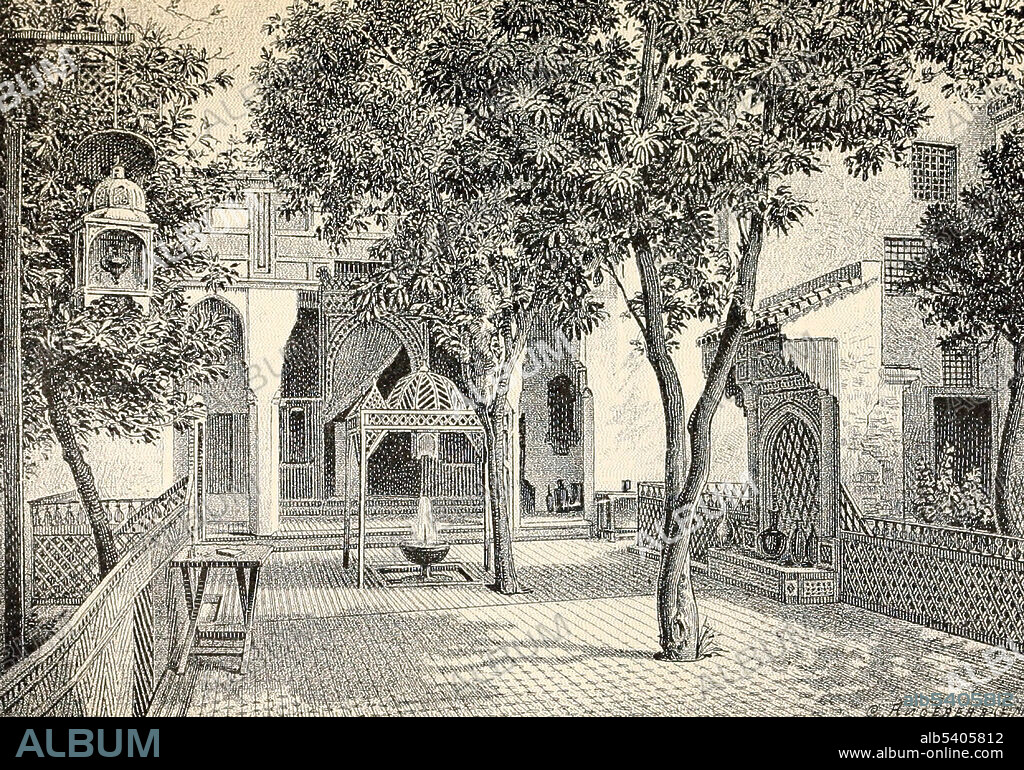alb5405812
North Africa, Fez Courtyard,19the Century

|
Zu einem anderen Lightbox hinzufügen |
|
Zu einem anderen Lightbox hinzufügen |



Haben Sie bereits ein Konto? Anmelden
Sie haben kein Konto? Registrieren
Dieses Bild kaufen.
Nutzung auswählen:

Titel:
North Africa, Fez Courtyard,19the Century
Untertitel:
Siehe automatische Übersetzung
Fez is a city in northern inland Morocco. A typical Fez house has a central courtyard open to the sky. The courtyard is light and airy, often has a fountain and mosaic tiles. Fez reached its zenith in the Marinid-era. Numerous madrasas, mosques, zawiyas and city gates were constructed which survived up until today. These buildings are considered the hallmarks of Moorish and Moroccan architectural styles. Marinid sultans also founded Fes Jdid quarter, where newer palaces and gardens were established. During this time, the Jewish population of the city grew as well, with the Mellah attracting the Jewish migrants from other North African regions. After the overthrow of the Marinid dynasty, the city largely declined and replaced by Marrakesh for political and cultural influence, but remained as the capital under the Wattasids and modern Morocco until 1912. In 1879-80 Oskar Lenz led the first trans-Sahara expedition from Morocco to Senegal and became the fourth European to visit the fabled city of Timbuktu. The others being, Alexander Gordon Laing (1826), René Caillié (1828) and Heinrich Barth (1853). Timbuktu; Travel through Morocco, the Sahara and Sudan by Oskar Lenz, 1884.
Bildnachweis:
Album / Science Source
Freigaben (Releases):
Model: Nein - Eigentum: Nein
Rechtefragen?
Rechtefragen?
Bildgröße:
4500 x 3153 px | 40.6 MB
Druckgröße:
38.1 x 26.7 cm | 15.0 x 10.5 in (300 dpi)
Schlüsselwörter:
 Pinterest
Pinterest Twitter
Twitter Facebook
Facebook Link kopieren
Link kopieren Email
Email
